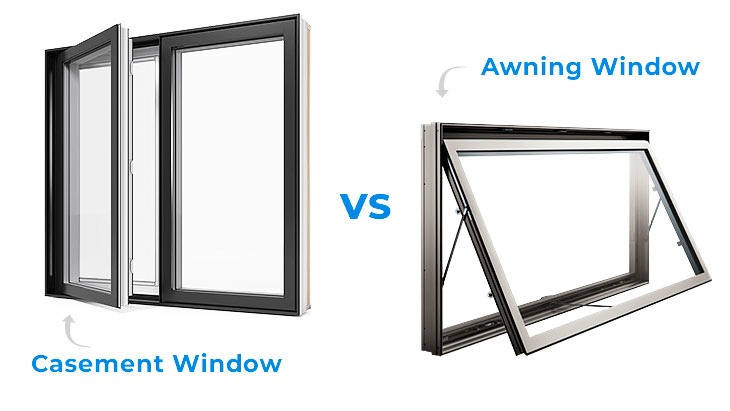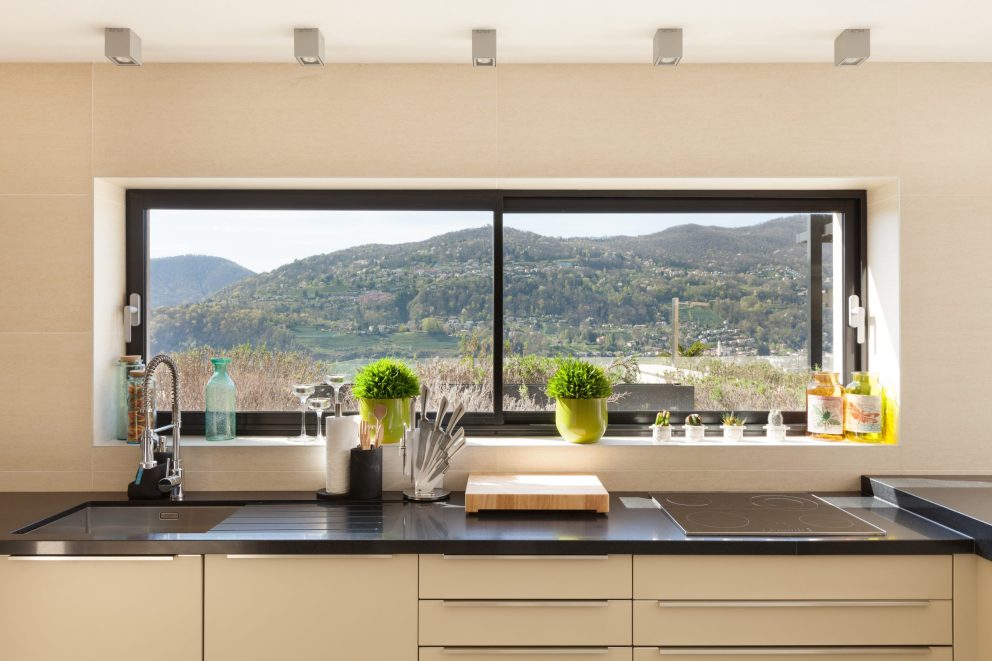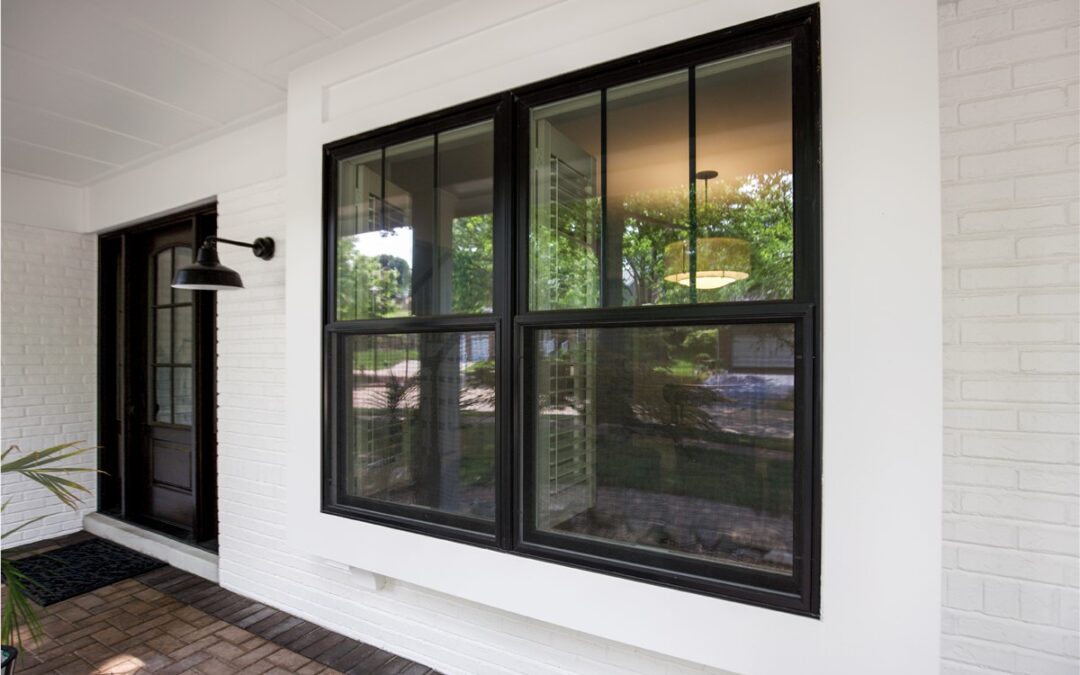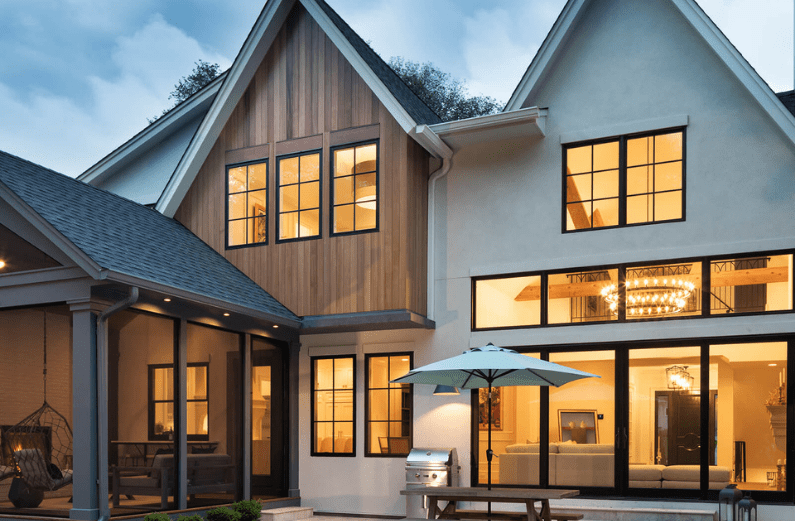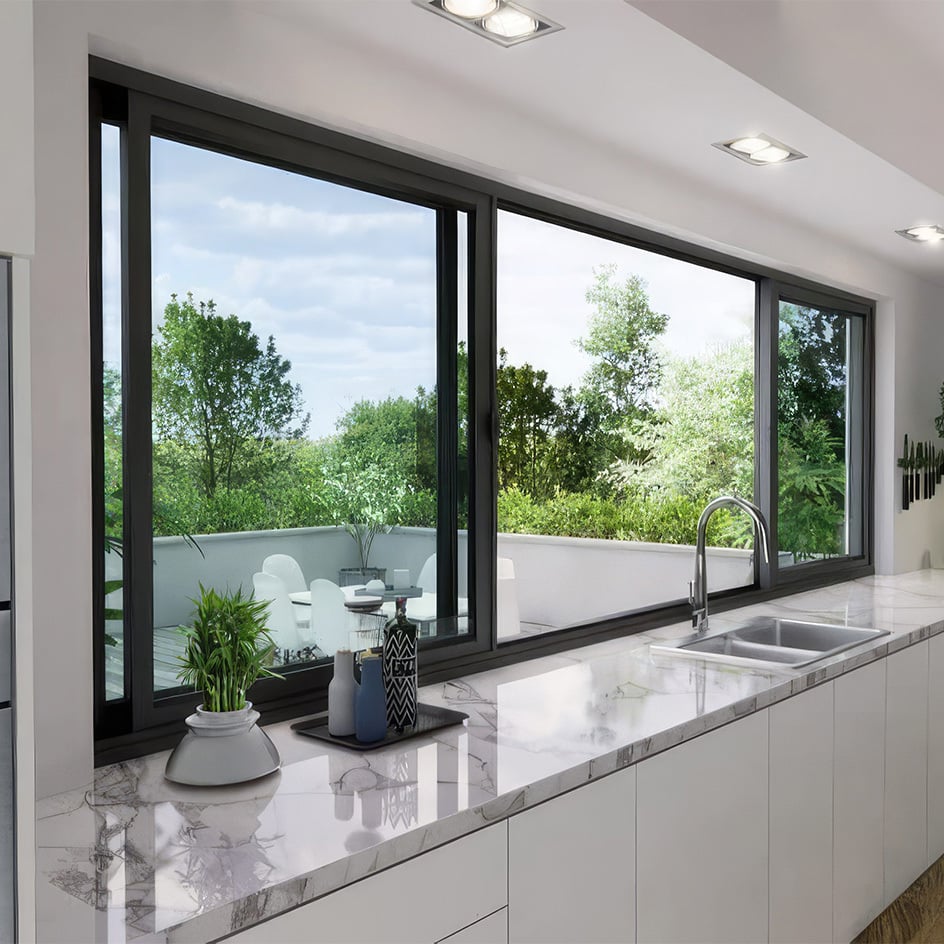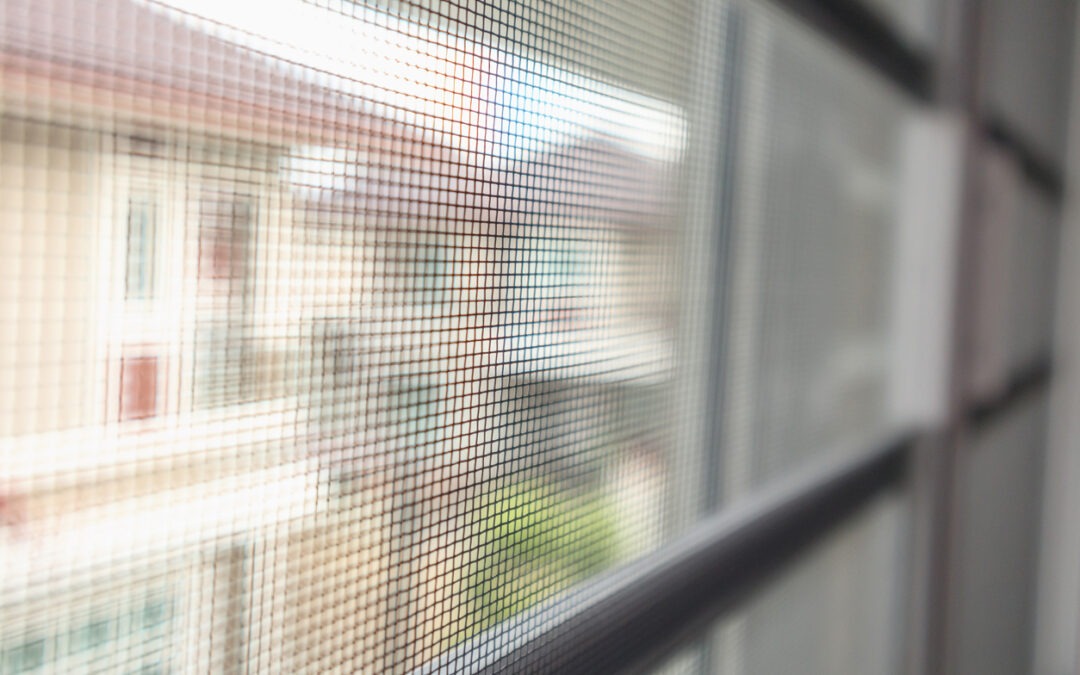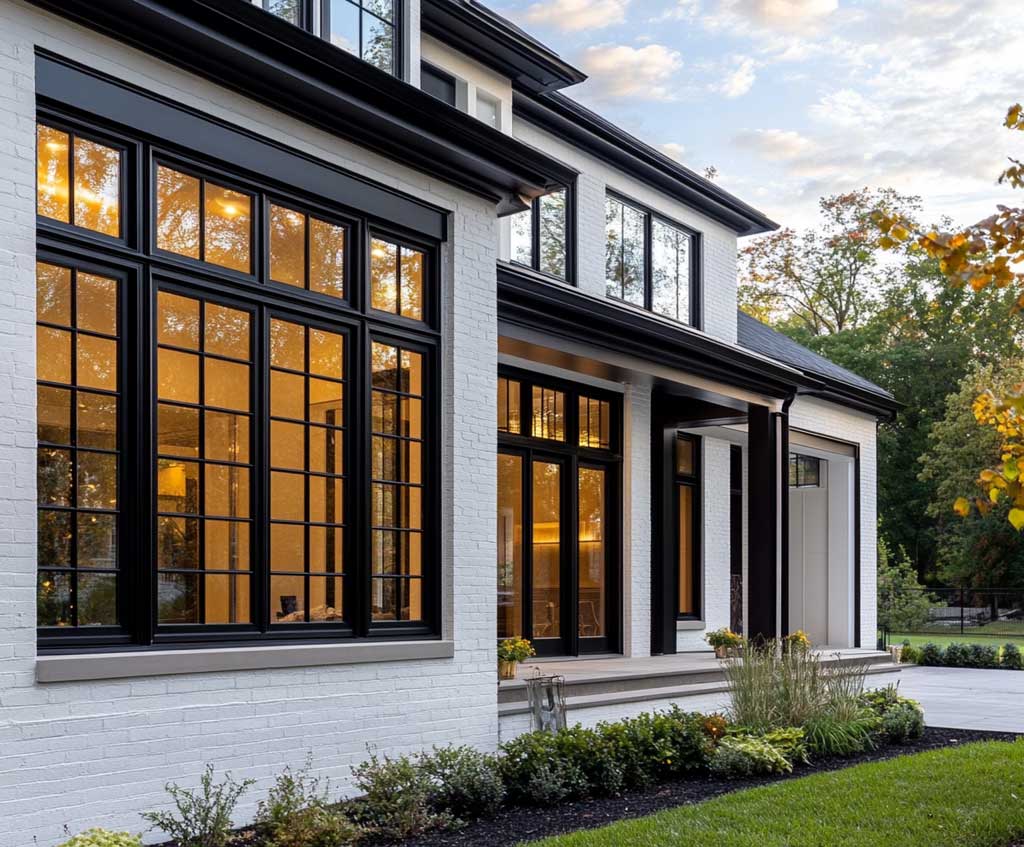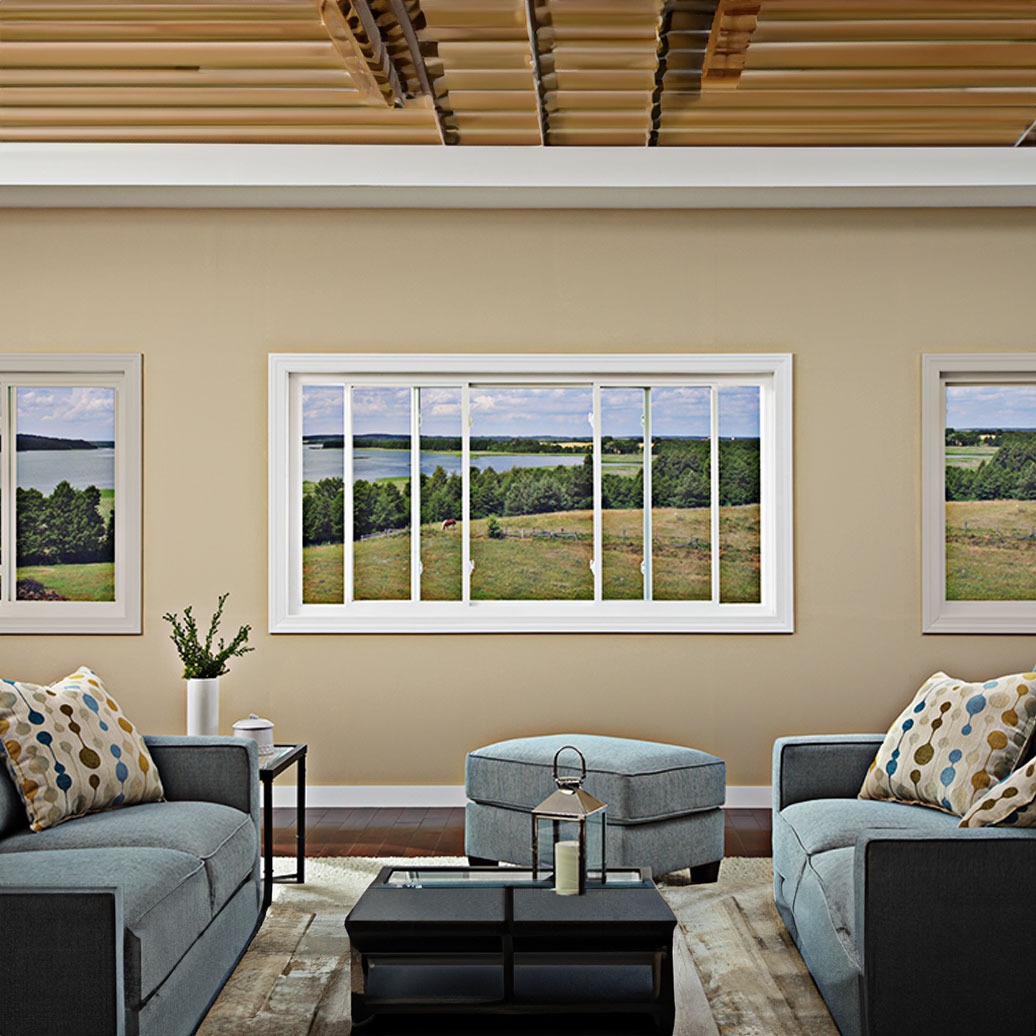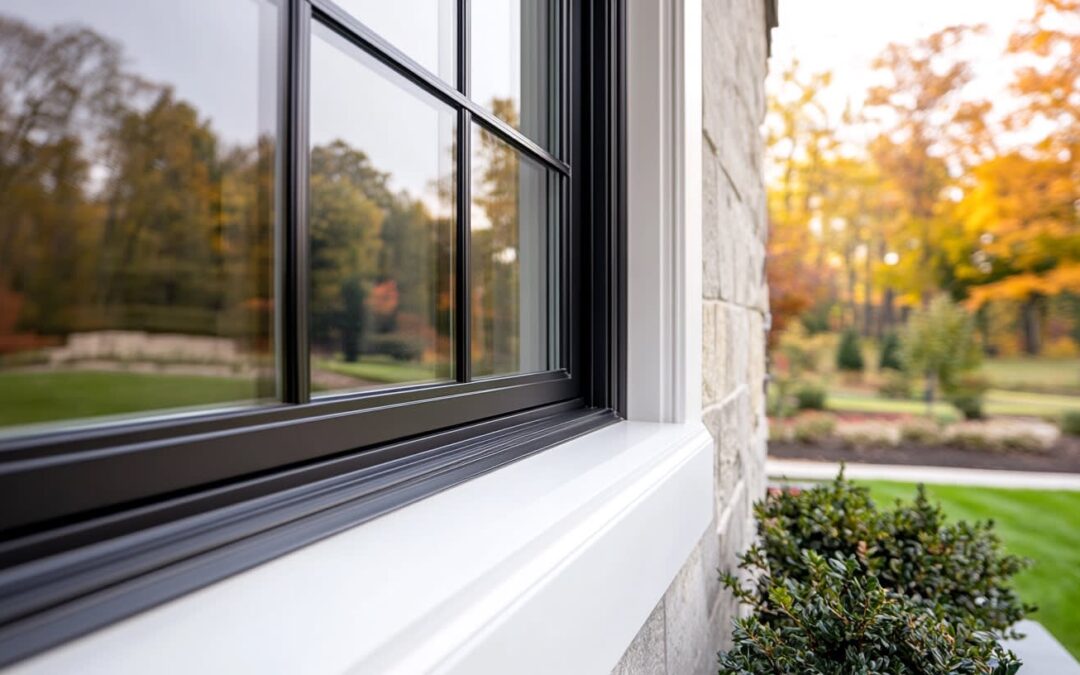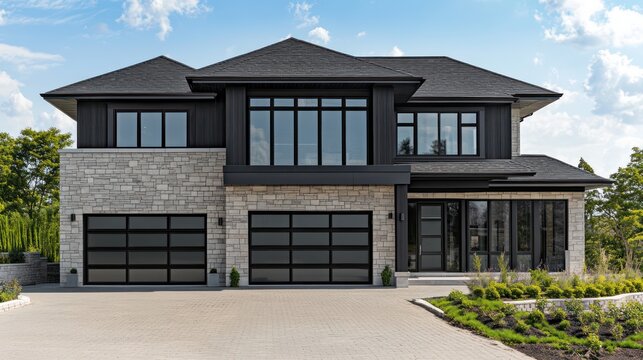Casement Windows vs. Awning Windows: Which is Best for Your Home?
Today, we’re exploring two popular window styles: Casement Windows and Awning Windows. Let’s dive into their unique characteristics, how they differ, and which spaces in your home they’re best suited for. When it comes to replacing your windows, it’s essential to choose the right style that fits your home’s aesthetic, functionality, and energy efficiency needs. At Imperium Exteriors, we specialize in window and siding replacement, helping homeowners make the best decisions for their homes.
What Are Casement Windows?
Casement windows are hinged at the side and open outward, much like a door, providing a wide opening for fresh air. They’re typically operated by a crank mechanism, allowing you to easily open or close them. These windows are known for their ability to catch the breeze, making them a great choice for improving airflow in your home.
Hover/Tap To See Full Photo
Functionality & Aesthetic Appeal
One of the main advantages of casement windows is their functionality. Because they open outward, they provide a full, unobstructed view of the outdoors. This makes them perfect for spaces where you want a clear, open view, such as in living rooms or kitchens. Casement windows also offer excellent security, as the locking mechanism is built into the frame, making them harder to break into.
Aesthetically, casement windows are often associated with a traditional or even European-style home. Their narrow, vertical frame gives a clean, modern look, adding elegance to any room. Whether your home has a classic or contemporary design, casement windows can complement the architecture with their sleek, sophisticated appearance.
Ideal Spaces for Casement Windows
Casement windows work well in virtually any room of the house. However, they are particularly suited for areas where airflow is essential or where you want an unobstructed view. Common spaces where casement windows are installed include:
- Kitchens: Perfect for catching the breeze while cooking or washing dishes.
- Living Rooms and Bedrooms: Providing clear views of the outdoors and great ventilation.
- High-Rise Apartments: Offering access to fresh air while maintaining security.
What Are Awning Windows?
Awning windows are hinged at the top and open outward, forming an “awning” effect that shields the window from rain. This design allows you to leave the window open during inclement weather without worrying about water entering your home. Awning windows are typically operated by a crank or lever mechanism, similar to casement windows, and they are commonly installed in combination with other window types.
Hover/Tap To See Full Photo
Functionality & Aesthetic Appeal
Awning windows share many similarities with casement windows in terms of their crank-operated functionality. However, the key difference lies in the way they open. Awning windows open from the top, creating a small gap at the bottom, making them ideal for providing ventilation without letting in rain. This makes them an excellent option for areas that need constant airflow but are exposed to the elements, like basements or bathrooms.
Aesthetically, awning windows give your home a more modern, sleek look. Their top-hinged design offers a unique appearance that differs from the traditional sliding or double-hung windows. They can be used alone or in combination with larger windows, like picture windows, to enhance the exterior design.
Ideal Spaces for Awning Windows
Awning windows are particularly suited for spaces where ventilation is needed but protection from the weather is a concern. They are commonly installed in the following areas:
- Bathrooms: Ensuring privacy while providing airflow.
- Basements: Offering ventilation without letting rain inside.
- Hallways: Providing light and fresh air without sacrificing privacy.
Key Differences Between Casement and Awning Windows
While both casement and awning windows offer excellent ventilation and modern design, there are a few key differences to keep in mind when choosing between the two:
- Hinge Placement: Casement windows are hinged on the side and open outward like a door, whereas awning windows are hinged at the top and open outward from the bottom.
- Rain Protection: Awning windows offer more protection from the rain due to their design, making them ideal for areas that need constant ventilation, even during storms. Casement windows, while effective at catching the breeze, do not offer the same rain protection.
- Space Requirements: Casement windows require more space to open outward, which may not be ideal for areas with limited space. Awning windows, on the other hand, have a more compact design and can be installed in tighter spots.
Why Choose Imperium Exteriors for Your Window Replacement?
At Imperium Exteriors, we understand the importance of choosing the right windows for your home. Whether you’re leaning toward the elegance and security of casement windows or the rain-resistant functionality of awning windows, our team of experts is here to guide you through the selection process.
Here’s why you should choose us for your window replacement needs:
- Expertise: With years of experience in window installation, we know how to recommend the best options based on your home’s needs.
- Quality Products: We only use high-quality windows from trusted manufacturers, ensuring long-lasting durability and energy efficiency.multiple top-of-the-line window brands, including Kolby, Marvin, Andersen, and Provia.
- Professional Installation: Our skilled team ensures a flawless installation process, guaranteeing that your windows perform their best for years to come.
- Customer Satisfaction: We pride ourselves on providing excellent customer service and work closely with you throughout the process to make sure you’re completely satisfied with your new windows.
If you’re considering replacing your windows, contact Imperium Exteriors today for a consultation. Our knowledgeable team is here to help you choose the right windows that fit your needs, budget, and home’s aesthetic.
Ready to Upgrade Your Windows?
Don’t wait to experience the transformational power of new windows. Contact Imperium Exteriors, your trusted Central Texas window replacement company, to explore our top-of-the-line window options and get a free consultation today!
📞 Call us at (737) 376-5800
🌐 **Visit imperiumexteriors.com
Elevate Your Kitchen with the Perfect Kitchen Windows: A Complete Guide for Austin’s Audacious Homeowners
The kitchen is often called the heart of the home—and for good reason. It’s the space where meals are prepared, family gathers, and friends are entertained. While cabinets, countertops, and appliances are key elements of any kitchen, one feature often overlooked—but incredibly impactful—is the kitchen window. The right window can…
7 Incredible Reasons Kolbe Windows Are a Genius Choice for Austin Homes (2025 Expert Guide)
Elevating Your Austin Home\'s View – The Kolbe Difference🏡✨ Howdy, Austin homeowners! Let’s discuss Kolbe Windows. We all know Central Texas weather is no joke—scorching summers, surprise hailstorms, and year-round humidity put your windows to the test. That’s why choosing the right replacement windows is about more than glass—it’s about…
Replacement Window Double Pane Glass: A Brilliant Upgrade That Boosts Comfort & Increases Your Property Value (2025 Edition)
Losing Money on High Energy Bills? 🧸🔋 Howdy, Austin homeowners! In a city where temperatures can swing from scorching summer days to crisp winter nights, the battle for home comfort is a constant one. While your AC and heater work hard, your windows are often the silent culprits behind drafts,…
Reimagine Your View: 7 Genius Window Styles for Effortless, High-Function Living in Austin
More Than Just Glass: Choosing the Right Window Type for Your Austin Home 🏠🪟 Windows are crucial architectural elements that define your home\'s aesthetic, flood your spaces with natural light, and provide essential ventilation. However, in Austin\'s unique climate – with its scorching summers, intense UV radiation, sudden downpours, and…
Sliding Windows: Why Smooth Style, Effortless Airflow Make Sliding Windows Perfect for Austin Homes in 202
The Practical Elegance and Strategic Advantage of Sliding Windows ↔️🪟 Let\'s talk about slide windows! In the vibrant and rapidly evolving Austin metropolitan area, homeowners demand more from their windows than just basic light admission. They require sophisticated solutions that can resiliently stand up to our intense, prolonged summer sun;…
Replacing a Window Screen Made Easy: 6 Savvy Tricks for Durable, Stress-Free Results
The Temptation of a Quick Fix🔨🩹🧰 For many Austin homeowners, a torn, loose, or sagging window screen seems like a simple problem with a simple solution. The internet is filled with tutorials on replacing a window screen—a project that, on the surface, promises a quick, low-cost fix you can knock out…
Window Grids: 11 Majorly Essential Points Every Austin Homeowner Should Know in 2025
What Exactly Is a Window Grid?🪟🤷 Your home\'s exterior is the first impression it makes, and in Austin\'s dynamic real estate market, curb appeal is king. While many homeowners focus on landscaping or paint color, one of the most impactful—and often overlooked—design elements is the window grid. These simple lines…
Your Ultimate Guide to Horizontal Sliding Windows for Modern Homes, Effortless Living & Unmatched Energy Savings
Austin\'s Smart View🌇💡 Howdy, Austin and Georgetown homeowners! There’s an undeniable allure to Austin living – that quintessential magic where vibrant indoor spaces flow effortlessly into sun-drenched patios, lush backyards, and inviting outdoor living areas. Your home\'s windows are the crucial visual gateways connecting these worlds, allowing you to bask…
Window Trim Styles — Elevate Your Home’s Look with the Perfect Frame & Elite Lasting Protection
Austin\'s Architectural Accent🏡✨🛠️ Howdy, Austin and Georgetown homeowners! When you envision your home’s exterior, the windows often capture your immediate attention—serving as major focal points that invite light and frame views. But often, it\'s the meticulously crafted window trim that truly elevates those windows, making them pop with defined character…
Unlocking Unmatched Privacy and Style with Austin’s Top Privacy Glass Windows (2025 Guide)
Make Your Austin Home a Haven of Peace and Modern Style🧘🏡 In a city as vibrant and rapidly growing as Austin, your home should be a personal sanctuary—a place where you can escape the hustle and bustle and enjoy complete peace and quiet. For discerning homeowners in Austin, Georgetown, and…

